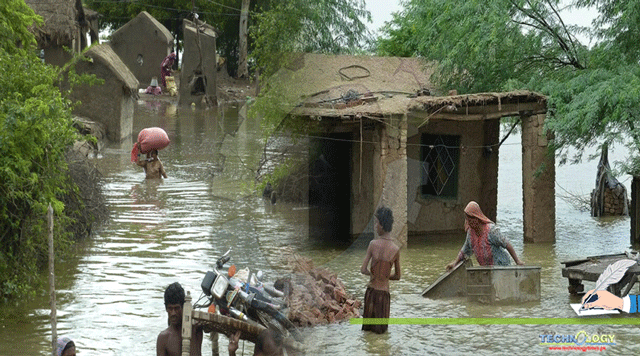In recent years, Pakistan has experienced a chain of economic catastrophes. Flooding caused by excessive rainfall is bringing extensive damage to infrastructure as well as loss of human and animal lives, and agricultural degradation.

By Muhammad Alamgeer,Muhammad Sajid,Muhammad Amjid,Dr. Hassan Munir
Floods in 2010 caused cumulative losses of almost US$ 16 billion and affected over 20 million people in Pakistan. Because of food and agricultural losses, over 7.8 million persons were considered food insecure.
The agriculture sector of Pakistan accounts for 21% GDP of the country and 60% of its exports. The natural disaster in the country’s history caused a loss of 1 million tons of wheat and sugarcane and 0.7 million tons of rice. Apart from crop loss, floods also cause severe damage to the soil which limits the future productivity of lands.
For agricultural lands, flooded soils present significant obstacles. The most significant direct effect of floods is the accumulation of sand and debris on productive lands. Also triggers the runoff of agricultural topsoil and flooded soil syndrome; the loss of useful fungi that mobilize plant nutrients from the soil. Flooding can result in significant alterations to the level of plant-available nutrients in the soil. Erosion can result in the loss of essential plant-available nutrients and organic materials. In addition, the deposition of flood sediments may raise the soil’s NPK and Zn levels. Flooding can limit the amount of available phosphorus, hence diminishing the populations of microbes important for enhancing phosphorus availability.
Because of these after-flood effects, farmers face crop losses and the destruction of agricultural land. Therefore, soil health, including soil texture, structure, water-holding capacity, and nutrient availability, should be recovered after flooding for enhanced agricultural productivity. The farming community must therefore prepare for the gradual restoration of their agricultural soils. Multiple recovery procedures are employed to manage the soil following flooding. So, the aftermath of heavy flooding on rural fields demands post-flood management comprising three essential steps.
First, to minimize limitations to crop production and manage deposition in fields, farmers must evaluate if the material and objects may be tilled into the ground or whether they must be physically removed. Due to the size of the debris and the travel distance, physical removal is expensive. Additionally, certain laws forbid the addition of sediments to the river.
The second procedure is to fix the physical destruction that erosion has done to the soil. The loss of soil will cause gullies and gaps to appear in the field. Tillage can help to reduce some erosion. The gullies are often stuffed with sediment first, then topsoil from another part of the field is filled in it. The farmer might be forced to give up on the field if the expense of the repair is too high.
Thirdly, it’s crucial to promote microbial and fungi activity in the soil. Symbiotic fungi called arbuscular mycorrhizae (AM) develop inside and on the roots of plants. Fungi penetrate roots without causing any harm to the plant. As a result, the plant gives the fungi nourishment in the form of carbohydrates, whereas the fungi give plant nutrients, particularly phosphorus. The fungi are eliminated from the system because no vegetation thrives in these fields during extended flood periods. To replenish the population of fungus, farmers may grow cover crops. Legumes (beans) and tiny grains are examples of “cover crops,” which include crops that provide sufficient ground cover to prevent soil erosion. Cover crops encourage microbial and fungal activity while also adding organic matter to the soil.
For farmers to repair their soils and restore the land to a productive state, the researchers at the University of Agriculture Faisalabad have discovered a variety of techniques to revive soil health. Not all fields, however, can be restored, but losses are frequently substantial.

Authors name:
1. Muhammad Alamgeer (Corresponding author)
2. Muhammad Sajid
3. Muhammad Amjid
4. Dr. Hassan Munir